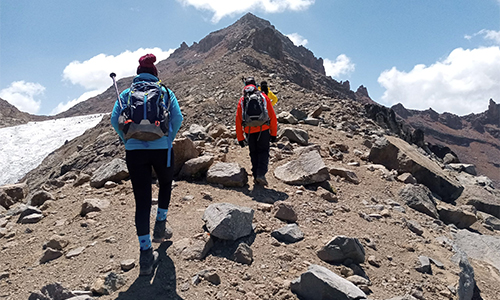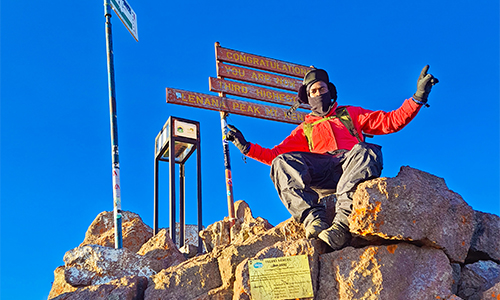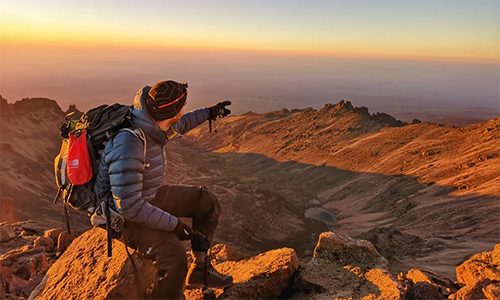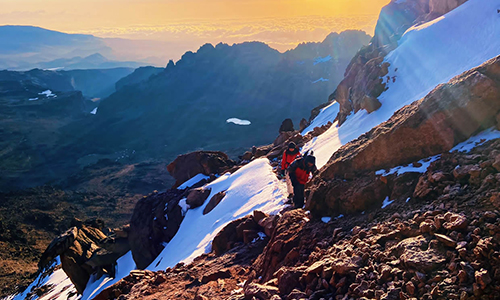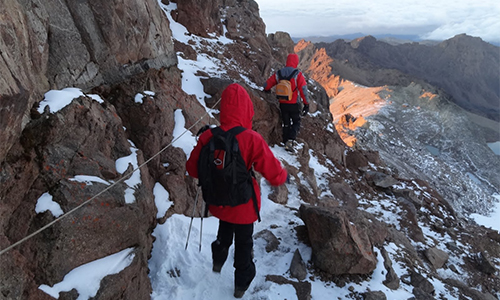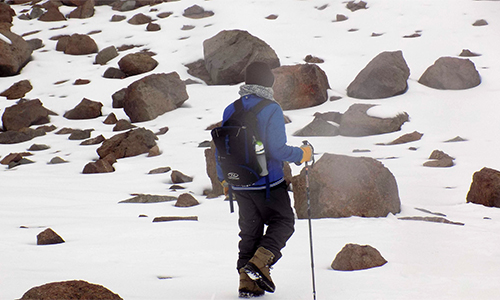Mount Kenya Climbing
Mount Kenya Climbing Package
Mount Kenya is the less climbed cousin of Mount Kilimanjaro nearby in Tanzania, however many people prefer the wilderness, abundant wildlife and stunning mountain lakes that you find on Mount Kenya.
Point Lenana at 4985m metres is a feasible trekking peak and also currently the worlds highest via ferrata summit route, which adds to the challenge and enjoyment. The panoramic views of the jagged volcanic peaks, wide valleys and surrounding savannah makes a trek on this mountain a thoroughly enjoyable African experience.
We have been guiding trips on Mount Kenya since 1996 and have full time mountain staff at the base. We adopt a proper approach to acclimatisation which means that the ascent is not rushed. We run advertised trips on all the main routes with scheduled dates, but can also offer tailor-made private trips.
We can add-on safari’s to experience a bit more of Kenya’s diverse culture and unique wildlife in some of the world’s great National Parks, Game Reserves and Conservancies.
Mount Kenya Climbing
The area surrounding the peak make up Mt Kenya National Park, well known for its unique flora and fauna. From the lowland savannah and bamboo forests the flora changes as you rise in elevation. Here you will find the unique high-altitude equatorial environment. The landscape seems as if it belongs on another planet with strange plants and misty terrain.
The approach to Mount Kenya from Nairobi involves a journey of about four hours to either the town of Naro Moru or Embu, where we can provide accommodation in a local hotel or our Guest House. Naro Moru is the base for ascents on the Sirimon, Burguret and Naro Moru routes and Embu is used for the Chogoria route.
All our advertised prices are based on camping on the mountain but there are also huts on the Sirimon, Naro Moru and Chogoria routes which you can upgrade to.
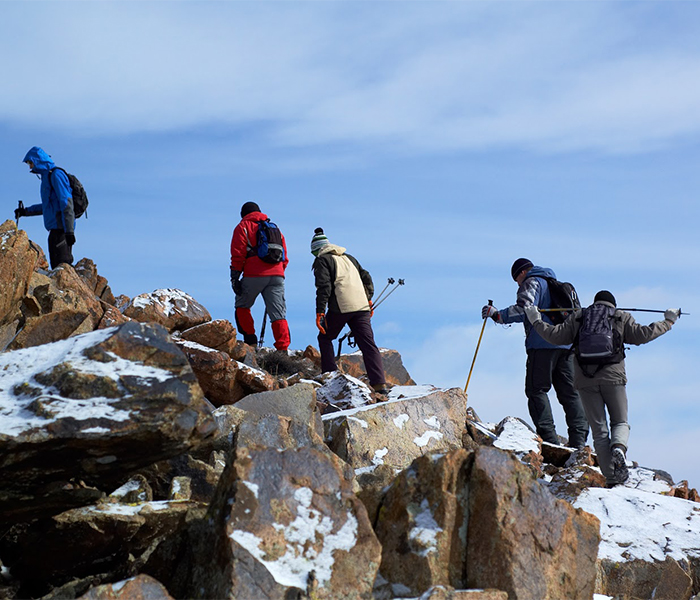
Featured Itineraries
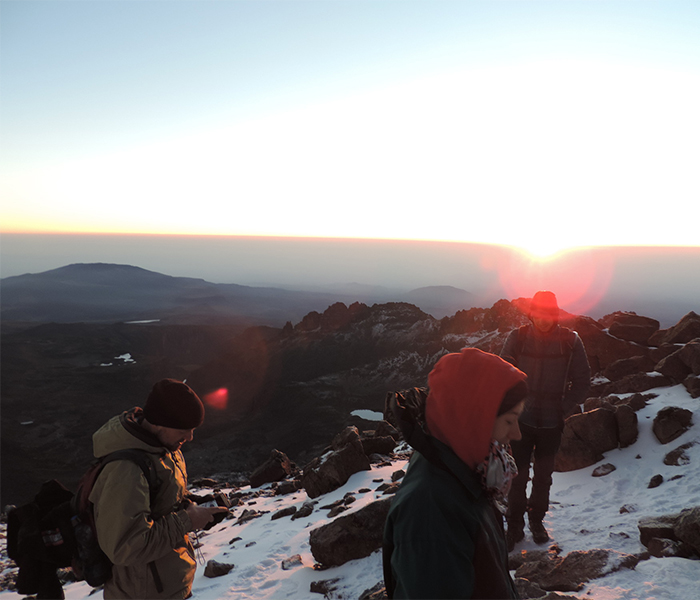
MOUNT KENYA CLIMBING NARO MORU ROUTE
From here, an acclimatisation day follows and then an early start to the summit, initially over easy paths to the head of the valley and then up a steep zigzag route on loose ground to reach the Austrian Hut at the base of the Lewis Glacier which has now retreated significantly over the past twenty years.
Aside from the stunning beauty, this route has the added challenge of a Via Ferrata. Feel the airy exposure of scrambling the side of the summit ridge from the Austrian Hut, the fixed lines help to provide a bit of extra confidence.
Naro Moru approach to the summit is definitely an adrenaline rush for those looking to experience the exposure of rugged peaks. From the summit our most popular descent is the stunning Chogoria route but cheaper and faster descents can be made down the Sirimon route or back down the Naro Moru route.
FAQ’S ABOUT KENYA SAFARI AND BEST TIMES TO GO FOR A SAFARI
Where to Go in Kenya?
The Masai Mara is where to go in Kenya for the dramatic wildebeest migration but there’s a great deal more to this East African country. Other classic big game destinations such as Amboseli and Tsavo are easily accessible as is the recently opened-up Laikipia Plateau region.
And after the drama of a Kenya safari, what could be better than a few lazy days on a white-sand beach? Kenya’s tropical coast offers everything from buzzing resorts to exclusive island hideaways making the country ideal for safari and beach vacations.
What are the Popular Routes Where Wildlife Viewing Is a Major Part of the Tour?
Kenya has no obvious safari routes, but there are clusters of parks that can easily be visited together. The country is relatively compact, so one can ‘mix and match’ to take in some of the highlights that don’t make an official circuit.
Most people fly into Nairobi’s Jomo Kenyatta International Airport (NBO) and make connections from there (out of the domestic Wilson Airport). Whichever circuit is chosen, one can always add a return flight from Nairobi to the Masai Mara, which should definitely be on every itinerary.
Southwest Safari Circuit
The southwest offers some of Kenya’s premier and most popular wildlife viewing.
Destinations:
Southeast Safari Circuit
If you’re planning a beach holiday, there are several options for a safari add-on. These parks are easily reached by car from any of the coastal resorts around Mombasa and Watamu or from Nairobi.
Destinations:
Central and Northern Safari Circuit
The area is altogether more rugged and remote than its southern counterpart and offers excellent wildlife viewing.
Destinations:
What is the best time to go on safari in Kenya?
A diverse geography means a variable climate across the country but Kenya is considered a year-round destination for both safaris and beach holidays.
Most Kenya safari destinations are at their best between January and the end of March; the climate is mild, mostly dry and game viewing is at its peak. Naturally, this time is considered the best time to go to Kenya on safari but a rainy season.
Visit – between mid-March to June and again between October and December – is well worth considering in order to avoid the peak-season crowds and to take advantage of cheaper, off-season rates on accommodation and tours.
When is the dry season in Kenya?
Generally, the best time to visit Kenya is in either of the two dry seasons, from January to March or July to October. Given the nature of the dry season, wildlife spotting is at its best at this time.
Vegetation is sparser, making distance viewing a lot easier. Plus, the animals tend to gather around waterholes as well as rivers and lakes, so finding them is also much easier.
Best Time to Visit Kenya’s Beaches
The coastal regions of Kenya, from Diani and Mombasa to Malindi and the northern islands of the Lamu Archipelago, tend to experience hot and humid weather year-round. However, temperatures and rainfall are at their highest between mid-March and May, so if you’re planning a beach break with your safari in Kenya, consider visiting outside of these months.
Those keen on snorkeling or diving should visit in the months of October, November and March for the clearest seas. Local marine life includes crabs, starfish, turtles and a variety of colourful corals. But Kenya’s tropical waters are also famous for hosting migrating whale sharks, particularly around Diani Beach. Between October to April, whale shark safaris give you the chance to see these gentle giants in an unspoilt environment.
Best Time to Climb Mount Kenya
The best times to climb Mt Kenya and Kilimanjaro tend to be the warmest and driest months – January, February, and September. June, July, and August are also good months. However, temperatures and weather are quite unpredictable, and can change drastically based on the time of day and altitude.
